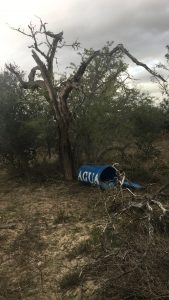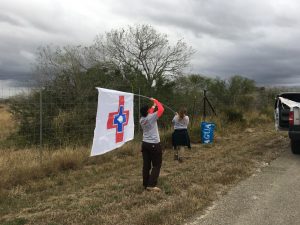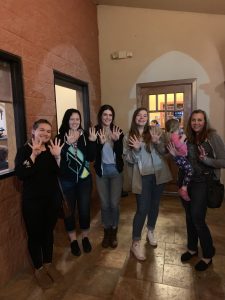This will be my third trip with Beyond Borders, and the pre-trip reflection has only gotten harder. It is emotionally conflicting to leave one season of fieldwork and return to the comfort of my daily routine. To some extent, being halfway across the country from the border crisis allows me to turn off a switch as I focus on accomplishing smaller goals that are more accessible. However, there are multiple distinguishable times throughout the year that I get flashbacks of my most impactful moments with Beyond Borders.
In some ways, every student involved in this project undergoes a similar experience, yet we all encounter unique triggers throughout the year that inflict some emotionally intense memories of our volunteer-work. I feel heartbroken and powerless during those moments, though it sounds exaggerated and unwarranted while others are hungry and dehydrated out there in extreme environmental conditions; many have no idea if they will ever see their family again, or whether they will live to see the sun rise in the morning. I cannot help but think about Tanya, our newest team member whose parents crossed the border, and wonder what personal aspects it will contribute to our understanding of the immigration process
On November 20, 2019, I attended a program hosted by a non-profit organization in Indianapolis, which focused on resilient people in our community and their stories of immigration into the US. Someone read a poem that hit me really hard. Part of that poem read:
I am sorry that everything is still on fire.
Once hate catches, the winds of “not my
problem” blow and the blaze is hard to stop.
But hard is not impossible. Not yet is different
than never… You and your community
together are the answer…
You are here to put out the ravenous flames
and heal the world. Enough is enough.
-Rev. Theresa l. Soto
This really resonates with me because I’ve seen how hard Dr. Latham has worked to develop relationships within the community. Its necessary we work together to help alleviating the load of this crisis at the border. I wish there was more we could do, but I know that even the smallest possible contributions are better than nothing.
Though this will be my third trip, I feel like I am blindly entering into the intensity once again. During my last visit to Falfurrias, I got a very small glimpse of the conditions of Texan ranchlands in which migrants often perish. As the unfamiliarity of this trip approaches, I think I can accurately say that I am excited yet terrified. I watched my good friend and colleague shed tears when she presented on her experience about a very similar volunteer season with Beyond Borders. Although she’d previously been through an exhumation season, physically trekking through the paths that numerous migrants had taken was profoundly eye-opening in a different way. I am nervous for the physical and emotional fatigue, but I am ready to return. I feel extraordinarily privileged to be able to aid in the possible survival of human beings who are enduring one of the riskiest journeys of their lives. I anticipate that I will emerge with a fuller understanding of the horrific journey that these migrants goes through, and I hope this leads me to better serve the community, the deceased, and their families.

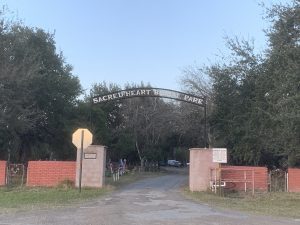 Another brought an entire lunch for almost forty of us while we labored in the field one day. The county judge brought us hot pizza. Peggy and Bill Clark hosted all of us at their household for a home-cooked meal. These were incredibly thoughtful yet completely unnecessary acts of kindness. They spent their time and resources to do something nice for numerous people they had never met. I will never feel as though I fully expressed my gratitude.
Another brought an entire lunch for almost forty of us while we labored in the field one day. The county judge brought us hot pizza. Peggy and Bill Clark hosted all of us at their household for a home-cooked meal. These were incredibly thoughtful yet completely unnecessary acts of kindness. They spent their time and resources to do something nice for numerous people they had never met. I will never feel as though I fully expressed my gratitude.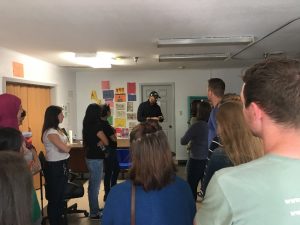
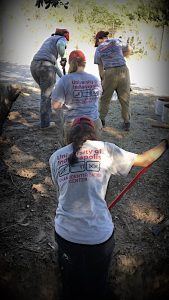
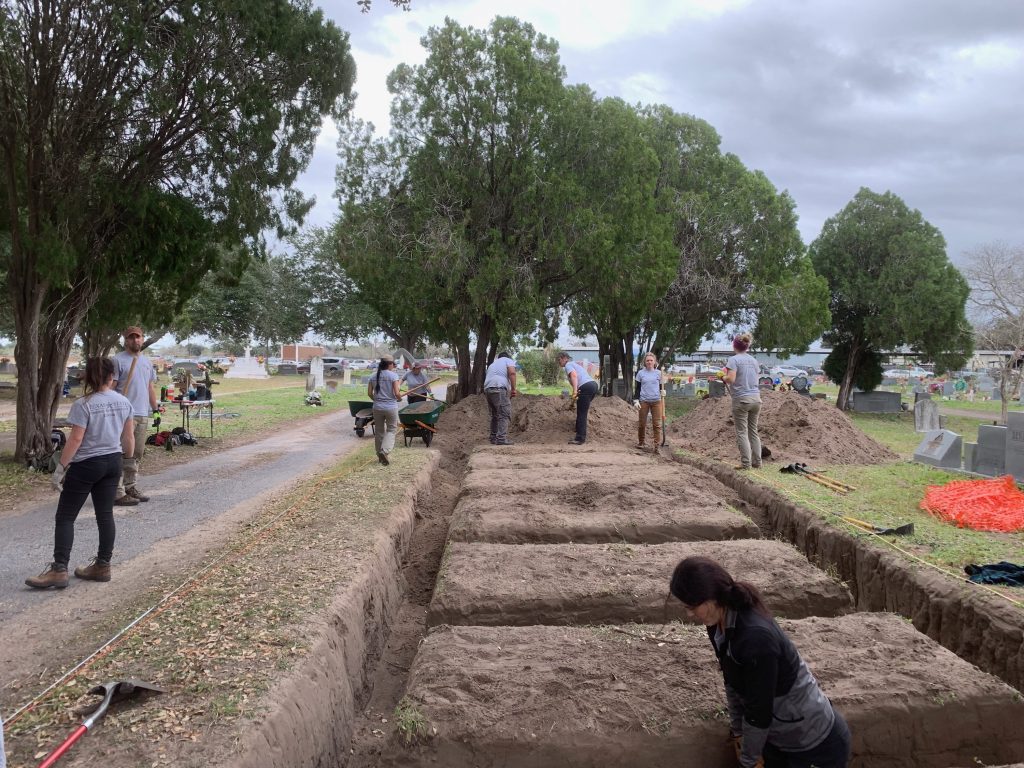
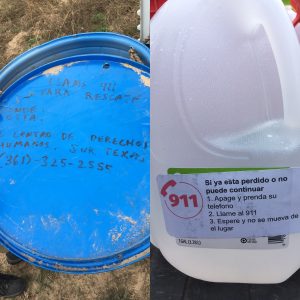 from afar. In addition, the Human Rights Center prints instructions on how to contact them and attaches them to each water bottle in case someone is desperate for help. The lids to the water stations also have contact information, and the GPS coordinate of that water station’s location so they can read it to the person they are contacting if they need assistance. Individuals who stumble upon these may have gone incredibly long periods of time without food and water. Many become lost for days in the thick, desert brushlands, but this route is their only option if they want to remain hidden. These water stations save people’s lives who may otherwise have be reduced to bone within days in the Texas heat.
from afar. In addition, the Human Rights Center prints instructions on how to contact them and attaches them to each water bottle in case someone is desperate for help. The lids to the water stations also have contact information, and the GPS coordinate of that water station’s location so they can read it to the person they are contacting if they need assistance. Individuals who stumble upon these may have gone incredibly long periods of time without food and water. Many become lost for days in the thick, desert brushlands, but this route is their only option if they want to remain hidden. These water stations save people’s lives who may otherwise have be reduced to bone within days in the Texas heat.